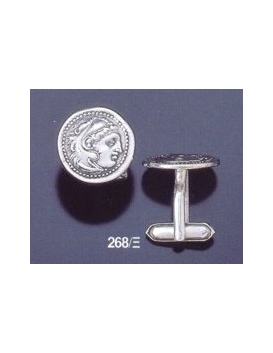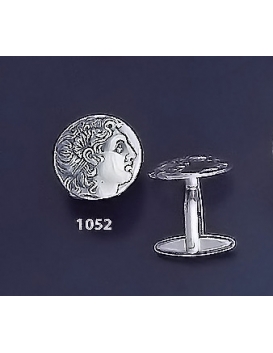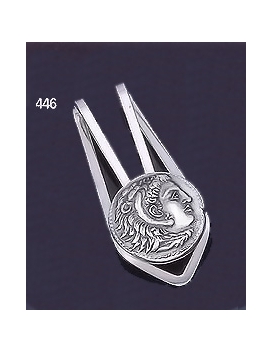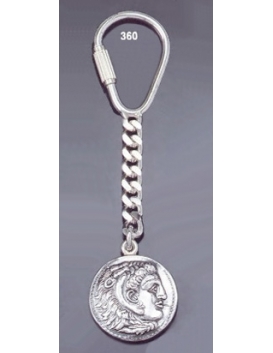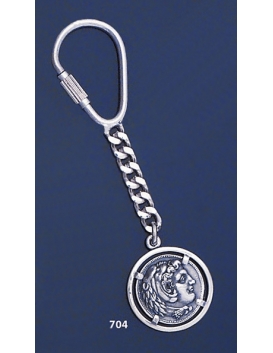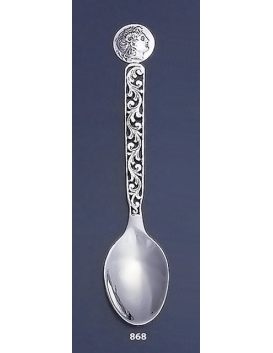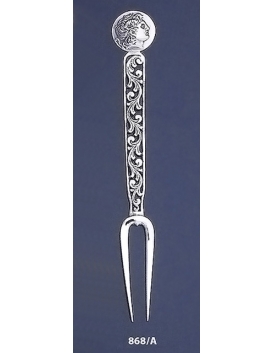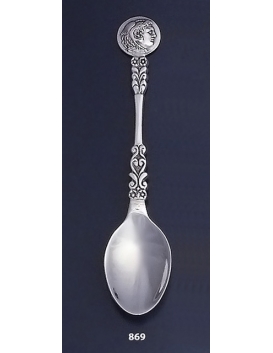SHOP BY
Top sellers
-

773 Athens tetradrachm, Athena & Owl of wisdom exquisite coin pendant
A breathtaking coin in Greek Jewelry Shop ultra quality. This is one...
$ 74.00 -

777/A Chalcidian league, god Apollo
Macedonia, Chalcidian League AR Tetradrachm. ca 380-370 BC. Laureate...
$ 55.00 -

-

1208 Goddess Athena Coin Pendant with Greek Key Pattern / Meander (L)
Head of Athena right, wearing round earring and crested Attic helmet...
$ 78.00 -

-

1210 Chalkidian League God Apollo Coin Pendant with Greek Key Pattern / Meander (L)
Laureate head of Apollo.
$ 78.00 -

-

232 Double headed ornate sterling silver dolphins-heads bracelet
Double headed ornate sterling silver dolphins-heads bracelet
$ 124.00
New products
More new products coming soon
Alexander the Great Jewelry
Alexander the Great (Alexander III of Macedon) was born 356 BC and died in 323 BC. By the age of 33 he had conquered most of the known ancient world. Tutored from childhood by Aristotle himself, he is thought of having one of the great minds of history, strategic brilliance and magnetic charisma. I am indebted to my father for living, but to my teacher for living well. (quote of Alexander)
Alexander's conquests were notably the first time that a form of 'globalization' was to have occurred in history, spreading the Greek language and ideals in culture, science, the arts, commerce and currency. The extent of his empire was vast, reaching as far as India and modern-day Afghanistan.
After the death of Alexander in 323 BC, owing to the fierce competition of his successors (diadochoi), his enormous empire was broken up into 7 independent dominions. This marked the end of the classical age and the beginning of the Hellenistic period.
There are 2 common types of Alexander the Great coins featured extensively in our coin jewelry collection.
1) Coins which were issued during Alexander's LIFETIME (often depicting the god Hercules or Athena) Hercules's image on Alexander the Great's lifetime coins was a tribute to the semi-god. It is said that out of 'modesty' Alexander did not want to provoke the gods by depicting his own image and chose Hercules instead. This way Alexander could cleverly also be widely associated with the virility and strength of Hercules himself.
2) Coins issued immediately after Alexander the Great's death by his successor King Lysimachus of Macedon. These coins DEPICTED ALEXANDER the Great himself in some of the most beautiful coin portraiture seen in universal coinage.
268/X Alexander the Great lifetime coin cufflinks
: For Him
: Era: Classical
: Solid Sterling Silver$ 90.001051 Alexander the Great Coin cufflinks
: For Him
: Era: Hellenistic
: Solid Sterling Silver$ 105.001052 Alexander the Great Coin cufflinks
: For Him
: Era: Hellenistic
: Solid Sterling Silver$ 105.001054 Alexander the Great (Hercules) Silver Coin Cufflinks (M)
: For Him
: Era: Classical
: Solid Sterling Silver$ 90.00445 Silver Money-clip with Alexander The Great (Lysimachos) Coin
: For Him or Her
: Solid Sterling Silver$ 120.00446 Silver Money-clip with Alexander The Great (Hercules) Coin
: For Him or Her
: Solid Sterling Silver$ 120.00484 Silver Money-clip with Alexander The Great (Lysimachos) Coin (S)
: For Him or Her
: Solid Sterling Silver$ 84.00482 Sterling Silver Bookmark with Alexander The Great (Hercules) Coin
: For Him or Her
: Solid Sterling Silver$ 55.00360 Silver Keyring with Alexander The Great (Hercules) Coin
: For Him or Her
: Era: Classical
: Solid Sterling Silver$ 163.20Collectible Silver Keyring with Alexander The Great (Hercules) Coin
361 Silver Keyring with Alexander the Great coin (portait) King Lysimachos
: For Him or Her
: Era: Hellenistic
: Solid Sterling Silver$ 163.20Collectible Silver Keyring with Alexander the Great coin (portrait) King Lysimachos
704 Silver Keyring with Alexander the Great ( Hercules ) coin
: For Him or Her
: Era: Classical
: Solid Sterling Silver$ 178.00868 Silver Carved Spoon with Alexander The Great ( Lysimachos ) Coin
: For Him or Her
: Solid Sterling Silver$ 86.00868/A Silver Carved Fork with Alexander The Great ( Lysimachos ) Coin
: For Him or Her
: Solid Sterling Silver$ 64.00869 Silver Carved Spoon with Alexander The Great ( Hercules ) Coin
: For Him or Her
: Solid Sterling Silver$ 86.00869/A Silver Carved Fork with Alexande the Great ( Hercules ) Coin
: For Him or Her
: Solid Sterling Silver$ 64.00895 Solid Silver Paper-Knife with Alexander The Great (Hercules) Coin
: For Him or Her
: Solid Sterling Silver$ 230.00






